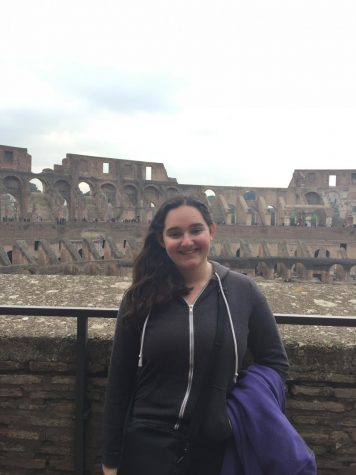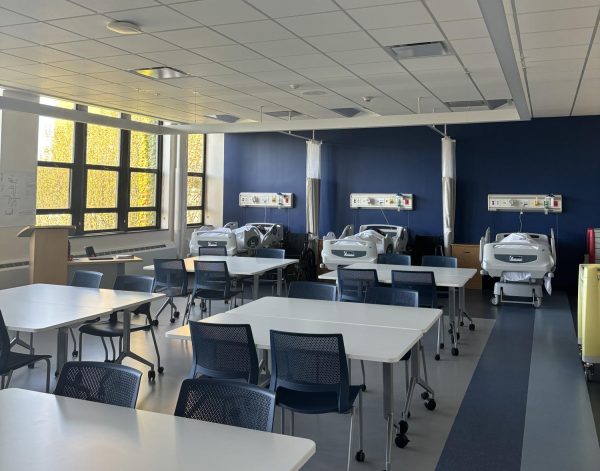Minding the gap: how ETHS is addressing racial achievement gap
December 13, 2019
The racial and socioeconomic achievement gap is an issue that has long plagued high schools around the country, and the latest ETHS Annual Achievement Report shows that ETHS is no different. Data from the 2018-19 report, which was presented at the Nov. 12 school board meeting, has contributed to the greater discussion regarding the achievement gap in Evanston.
“I think as long as we can still observe the racial [and socioeconomic] achievement gap in our school, then there’s more work to be done. So I think people are definitely working in the right direction… but there’s more to be done,” chemistry teacher and teamASAP facilitator Tina Lulla said.
The report focused on measures of col lege and career readiness according to Illinois Every Student Succeeds Act (IL ESSA) state standards. Criteria students must meet to be considered college and career ready include an unweighted GPA of 2.8 or higher, 95% attendance and proficiency in English/Language Arts and mathematics, which is achieved by doing things like completing an ELA or mathematics AP course with a grade of A, B or C.
Overall, 75% of the class of 2019 met two or more of the standards: 98% of white females, 93% of white males and 88% of Asian male and female students met two or more of the standards, compared to only 61% of Hispanic females, 57% of black females and 53% of black and Hispanic males. Only 50% of those on free/reduced price lunch met two or more of the standards.
Even though the ETHS Department of Research, Evaluation & Assessment primarily discussed the college and career readiness standards and presented their data via charts, the school board was more interested in addressing the achievement gap.
“It’s just so frustrating and sad… the disparities in the outcomes between our black and brown students and our white students. However, it’s not surprising because it’s reflective of our numbers as it relates to outcomes academically. When you consider alignment of our curriculum to these benchmarks, it makes sense that black and brown students are underperforming in their subject areas, and they do so when they take the test as well,” School Board Member Jude E. Laude said at the Nov. 12 board meeting. “What is our process and what is our approach as we interpret and unpack this data that leads to action items… How do we position ourselves to change these trends?”
One of the issues the Research, Evaluation & Assessment team addressed was the IL ESSA proficiency standards for English/Language Arts compared to the mathematics standards. In order for a student to be considered academically proficient in English/Language Arts, a student must achieve one of the following: complete an AP English course with a C or higher, score a three or higher on an AP English exam or, for graduating classes after 2017, have a Reading or Writing SAT subject score of 480 or higher.
“If we wanted everyone to be college ready, we simply enroll all of our juniors into AP English and then figure out the grade sorting after that. That’s very cynical; we would never do that. However, that’s what this indicator really privileges here. Not just any AP classes, not dual credit courses, but AP English courses. And there’s only two of them,” ETHS Assistant Superintendent of Curriculum & Instruction Pete Bavis said at the school board meeting.
For mathematics, students must achieve one of the following: complete Algebra 2 with a C or higher, score a three or higher on an AP math exam or, for graduating classes 2018 onwards, have a mathematics SAT subject score of 480 or higher.
“In math you’ll see the indicators are a bit lower. I’m going to say they’re a bit lower because one of the courses [Algebra 2] that the vast majority that our students take as part of their math sequence is the first [option],” Bavis said.
78 percent of the class of 2019 met at least one of the mathematics benchmarks; only 65 percent met at least one of the English/Language Arts benchmarks. In both cases, the averages for white and Asian students were above the school mean and the averages for black and Hispanic students were below the school mean.
“I think that some people can have a lower score on those tests and certainly be college ready. It’s also the case that they may not be. It’s very hard to speak generally about this stuff; it’s more of an individual thing,” English teacher Erica Thompson explained.
The 2018-19 Achievement Report is aligned to state standards. There are other research reports and actionable items more directly applicable to Evanston and addressing the achievement gap. One of these efforts is the Northwestern-Evanston Education Research Alliance (NEERA), which is a collaborative endeavor between District 65, District 202 and Northwestern University.
“NEERA is what we call a research practice partnership and its goal is to bring researchers from Northwestern together with practitioners from the school districts… to work for equity and excellence in education in our community,” Amy Pratt, Northwestern Assistant Dean for Community Education Partnerships, explained in an interview with The Evanstonian.
One main project NEERA has been working on is developing a persistence compass which analyzes various indicators amongst eighth and ninth graders to predict future college persistence amongst Evanston students specifically.
“The compass can be used to help flag students for support, and part of that is getting a better, more nuanced, more individual level understanding of which students and in what ways they might need support. Which, at least in my mind, obviously can be used to address an achievement gap because you are exactly looking at which students are behind and where they’re behind and if they’re behind at all,” Northwestern Research Data Analyst Lead Lila Goldstein said in an interview with The Evanstonian.
Other projects NEERA has, or is currently facilitating, include examining transportation within district 65, leading workshops for teachers, looking at various stressors in students lives and researching out-of-school learning opportunities for students.
“Most of [the projects] at least in some way address equity because equity is a high priority for both districts. Trying to learn how to do that is always going to be part of the work that we’re doing,” Pratt said.
A study from Professor Sean Reardon of Stanford University analyzing test scores of hird through eighth graders from 7,800 public school districts in the United States found that white students score an average of 1.5-2 grades higher on tests than black students and 1-1.5 grade levels higher than Hispanic students. In some districts across third through eighth grade, the achievement gap widened while in other places the achievement gap closed.
“[This research] tells us the extent of opportunities up until the time they take that test. It tells us some token of education at home, preschool programs in their neighborhoods, or other opportunities.… It doesn’t tell us where kids are at in high school, but it tells us where kids are at when they get to high school,” Reardon said in an interview with The Evanstonian.
Reardon claims there are two main factors driving the achievement gap: segregation and socioeconomics. Segregation in this context applies to the separation by race or socioeconomic status which places students in different public schools with different amounts of funding and opportunities provided at each school.
In District 65, there is no clear unequal distribution of funding amongst schools. However, census tract data for Evanston shows large socioeconomic discrepancies amongst different areas. The median 2017 household income varies from $30,048 in census tract 8093 (primarily 5th and 1st ward) to $137,188 per year in tract 8089 (primarily northern 6th ward).
“Evanston has one of the very largest achievement gaps – racial and economic achievement gaps – in the country… The gaps are larger than other places not because black students or poor students perform low, but because white students, or more advantaged students, perform very high in Evanston. There’s clearly lots of educational opportunity in Evanston tional equality and opportunities. ” Reardon explained. “But the challenge is to make sure that’s shared broadly among all children.”


















